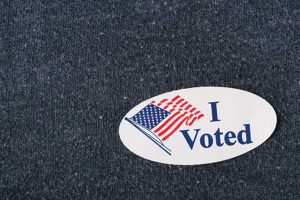By Lauren Carnes, NHADA Gold Partner O’Connor & Drew, P.C
[The following information was compiled for members by NHADA Gold Partners & tax advisors O’Connor & Drew, P.C. This information will apply generally to all dealerships, but you are advised to seek advice from your own counsel for your dealership’s particular circumstances.]
COMPLIANCE CHECKLIST FOR W-2s, 1099s, AND CASH REPORTING:
1. Have you included the following items in each employee’s final payroll, which will be included on the Form W-2?
- Year-end Bonuses
- Use of Demonstrators (see below)
- Cost of Group-Term Life Insurance Coverage in Excess of $50,000
- Cost of Shareholder’s Health Insurance Premiums and Other Fringe Benefits
- Aggregate Cost of Employer-Sponsored Health Insurance Coverage to be included on W-2 (box 12, code DD) if file 250 or more W-2s . . . However, Amount is Not Taxable
- Separate employer reporting requirements for “applicable large employers” (Forms 1094-C and 1095-C) under the Affordable Care Act are required for the 2020 tax year. Self-insured employers will need to file additional Forms 1094-B and 1095-B to report information about covered individuals.
2. Issue all appropriate 1099s and W2’s to recipients and the Internal Revenue Service by February 1, 2021.
- Report on Form 1099 – NEC – Nonemployee Compensation Paid to Unincorporated Service Providers
- Report on Form 1099 – MISC – Rents Paid to Un-incorporated Lessors
- NOTE: Reporting is not required for services
under $600 - Report for attorneys – All Payments, whether or not incorporated. Payment for legal services, but not for the attorney’s services, report on Form 1099 – MISC; payment for attorney’s fees, report on Form 1099-NEC.
- NOTE: Reporting is not required for services
- Report on Form 1099-INT – Imputed Interest on Shareholder Loans
- Use Form 1099-B for Settlement Payments (all payments)
3. All customers for whom you filed a Form 8300 (“Report of Cash Payments over $10,000”) during 2020 must receive a notification on your letterhead by January 31, 2021.
4. Employer’s obligation under .9% additional
Medicare tax
- Applies to wages and compensation (including taxable fringe benefit) in excess of the threshold amount paid in a calendar year.
- Required withholding starts in the pay period in which wages and compensation paid to an employee exceeds $200,000, regardless of filing status and wages paid to the employee by another employer.
- An employee cannot request that additional amounts be withheld specifically for additional Medicare tax but can increase Federal income tax withholding with any excess income tax applied to other taxes due (including additional Medicare tax) upon the filing of the employee’s income tax return.
5. Employers do not have an obligation to withhold taxes for the 3.8% Medicare Contribution tax. However, employees may elect to increase their Federal income tax withheld to account for these taxes to be applied appropriately upon filing their income tax return.
REPORTING FOR DEMONSTRATORS
For the Year Ending December 31, 2020:
As of January 1, 2002, IRS Revenue Procedure 2001-56 sets forth the requirements for a dealer to report demonstrator vehicles provided to their employees. Be sure that appropriate amounts are included in each employee’s gross wages. The total 2020 inclusion amount should be reflected in box 14 of each employee’s Form W-2.
For the Year Ending December 31, 2021:
- For January 2021, continue to use daily inclusion amounts calculated under the Annual Average Look Back Method based upon your December 31, 2019 factory financial statements (the amount used in 2020).
- Once your December 31, 2020 factory financial statements are completed, you must recalculate your daily inclusion amounts under the Annual Average Look Back Method.
- Apply the new daily inclusion amounts beginning in the first reporting period for February 2021.
NOTE: Please see NADA Management Guide L.17, Federal Tax Treatment of Demos (June 2002).
BUSINESS TAX UPDATE
De Minimis Safe Harbor Election: This annual election allows for the expensing of low-cost assets up to $5,000 for entities with audited financial statements, or $2,500 for all other entities. Items within the scope of the de minimis safe harbor election are treated as deductible expenses and not depreciable capital assets.
BET and BPT Tax: The New Hampshire Business Enterprise Tax (BET) is currently imposed at a 0.6% rate for 2020. Business Profits Tax (BPT) rate is 7.7% for 2020.
§179 Limitation: For 2020, the §179 limitation amount is $1,040,000 for Federal ($500,000 for NH). The §179 deduction is reduced dollar for dollar for qualifying property placed in service during the tax year that is in excess of $2,590,000. This is an entity by entity limitation, not an aggregate limitation.
Bonus Depreciation: For 2020, taxpayers that have floor plan financing interest that is taken into account under section 163(j) business interest expense limitation are disqualified from taking bonus depreciation. However, see Reg 1.168(k)-2 and NADA Headlines (9/16/19) to see if you may still qualify for bonus depreciation for federal. NH does not conform to bonus depreciation.
Luxury Automobile Depreciation Limits: For vehicles placed in service in 2020, with a gross vehicle weight of under 6,000 lbs., the maximum first-year depreciation allowed is $10,100 without bonus depreciation and $18,100 with bonus depreciation.
Paycheck Protection Program (PPP) Loans: Presently, per IRS Notice 2020-32, no deduction is allowed for federal tax purposes for the payment of an expense that results in PPP loan forgiveness. The Treasury is expected to issue guidance soon for borrowers with expenses paid in one year and forgiveness received in a later year. Continue to monitor legislation for changes to this rule, as several Congress members have voiced support for deductibility of PPP expenses.
NEW HAMPSHIRE MINIMUM WAGE
Effective 08/21/2011, no employee shall be paid at an hourly rate lower than that set forth in the federal minimum wage law, which is currently $7.25 per hour.
IMPORTANT PAYROLL LIMITS FOR 2020 & 2021
FICA Limit: For 2020, the maximum wages subject to FICA tax is $137,700 ($142,800 for 2021). Medicare wages have no limitation.
401(k) Contribution Limits: The maximum deferral under a 401(k) plan is $19,500 for 2020. Additionally, any participant who will be age 50 or older as of December 31, 2020, may contribute an additional $6,500 for 2020 as a “catch-up contribution.”
Mileage Reimbursement Rate: The standard business mileage reimbursement rate for the year beginning January 1, 2021, has not yet been released by the IRS. The rate will likely be close to 2020s 57.50 cents per mile.
PUT LIFO ESTIMATE ON 12TH MONTH (DECEMBER) FACTORY STATEMENT
A reasonable estimate of the change in the LIFO reserve must be booked and appear on the 12th-month factory financial statement. For calendar year taxpayers, this would be the December statement. Failure to record a LIFO adjustment on the 12th-month statement could result in termination of the LIFO election and recapture of the LIFO reserve into income.
COMPLIANCE WITH THE ADDRESS DISCREPANCY, “RED FLAGS,” AND SAFEGUARDS RULES
The Federal Trade Commission (FTC) has enacted three rules in recent years relating to protecting consumers against the threat of identity theft: the Address Discrepancy Rule, the “Red Flags” Rule, and the Safeguards Rule. Auto dealers are required to comply with each of these rules due to their involvement in finance and lease transactions. While these rules have been in effect for several years, it is important to note that compliance is an ongoing process as the FTC reserves the right to audit any organization within its jurisdiction at any time. As a result, any dealer that is not in full compliance with these laws should take the necessary steps to do so as soon as possible.
Address Discrepancy Rule: The deadline for implementing the Address Discrepancy Rule was November 1, 2008. This rule requires consumer reporting agencies to issue a notice of address discrepancy to any user of a credit report when the address provided to the consumer reporting agency substantially differs from the address on the credit report. The dealership must implement and document in writing, policies, and procedures to reasonably conclude that the consumer report relates to the consumer for whom the dealership requested the report.
Red Flags Rule: The Red Flags Rule went into effect on November 1, 2008; however, the FTC delayed enforcement of the Rule until January 1, 2011. This rule is a requirement for any organization that opens an account with a customer in which the payments are deferred. Dealers are required to develop, implement, and maintain policies and procedures to prevent, detect, and respond to identity theft. Penalties range from $2,500 to $11,000 per violation, and that does not factor in the extensive legal fees that could result from the threat of a lawsuit. As with the Safeguards Rule, the Red Flags Rule requires that the dealer document the entire compliance effort, which can be summarized by the following steps:
- Appoint a Compliance Officer
- Perform a risk assessment in which you identify the “covered accounts” and the “red flags” that could indicate the potential of identity theft within those accounts
- Develop policies and procedures that detect and respond to the red flag
- Document the policies and procedures in a written Identity Theft Prevention Program
- Employee training
- Agreements with service providers
- Senior management’s approval
- Annual compliance reports
Safeguards Rule: The Safeguards Rule has been in effect since May 23, 2003. This rule’s main objective is to outline the policies and procedures in place to safeguard non-public customer information. These policies and procedures must be outlined in an Information Security Program. If you are not in compliance, you should still do so even though you are past the May 2003 deadline. The Information Security Program must be in writing and must include the following five specific components:
- Designate a compliance officer(s)
- Identify and assess foreseeable risks to customer info
- Design and implement internal controls
- Detail agreements with service providers
- Monitor and evaluate compliance
Monitor Compliance: The requirement to monitor and evaluate compliance is an ongoing process. It is important to regularly evaluate the policies and procedures in place to ensure that your dealership is in full compliance with the Safeguards Rule. The Written Information Security Program should be revised when necessary. Compliance does not end with the Written Information Security Program.
NOTE: O’Connor & Drew has developed a Safeguards Rule Compliance program for auto dealers. Materials are available as a self-install kit including CD and materials written by the Association of F&I Professionals (AFIP), or as a full-service program, which includes installation and compliance review by accountants from O’Connor & Drew. For additional information on the comprehensive plan, call Frank O’Brien at O’Connor & Drew, (617) 471-1120.
ADDITIONAL RESOURCES AVAILABLE
For more information on any of the above topics, NHADA members may be referred to NHADA Gold Partner O’Connor & Drew’s Lauren Carnes at lcarnes@ocd.com or 617-471-1120 as a member service. Past NHADA bulletins and much more are posted at nhada.com.
Lauren Carnes, NHADA Gold Partner O’Connor & Drew, P.C
This story appears in the 2020 Issue 6 of Drive: NH Magazine.









